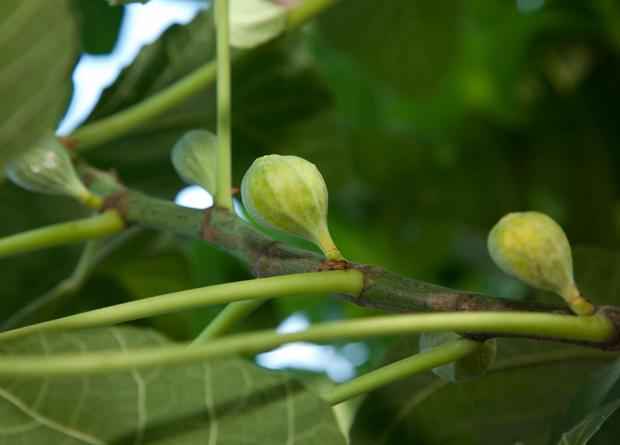A mutual gift
The inner walls of this syconium, a sort of sealed urn, are covered in the miniscule flowers of a fig tree. How are these hidden flowers fertilized? By an astonishing form of symbiosis (Intimate association between two organisms.).
A female wasp, covered in pollen, makes her way into the syconium, lays her eggs in the flowers (pollinating them at the same time), and then dies. The larvae hatch, feed on the ovaries of half of the flowers, and mate. The fertilized females then dig themselves out of the syconium in order to find a new one where they will start the cycle over. As they escape, their bodies are covered in the pollen of the unharmed flowers. So you see, the fig tree gives the wasp food and shelter in exchange for pollinating its surviving flowers.

© Jardin botanique de Montréal (Michel Tremblay)
What happens to the males in our story? Without wings, they are fated to die inside the fruit. Don’t panic, though! The figs we buy at the grocery store are parthenocarpic: in other words, they develop from unfertilized flowers. So no need to worry about finding a dead wasp inside!




